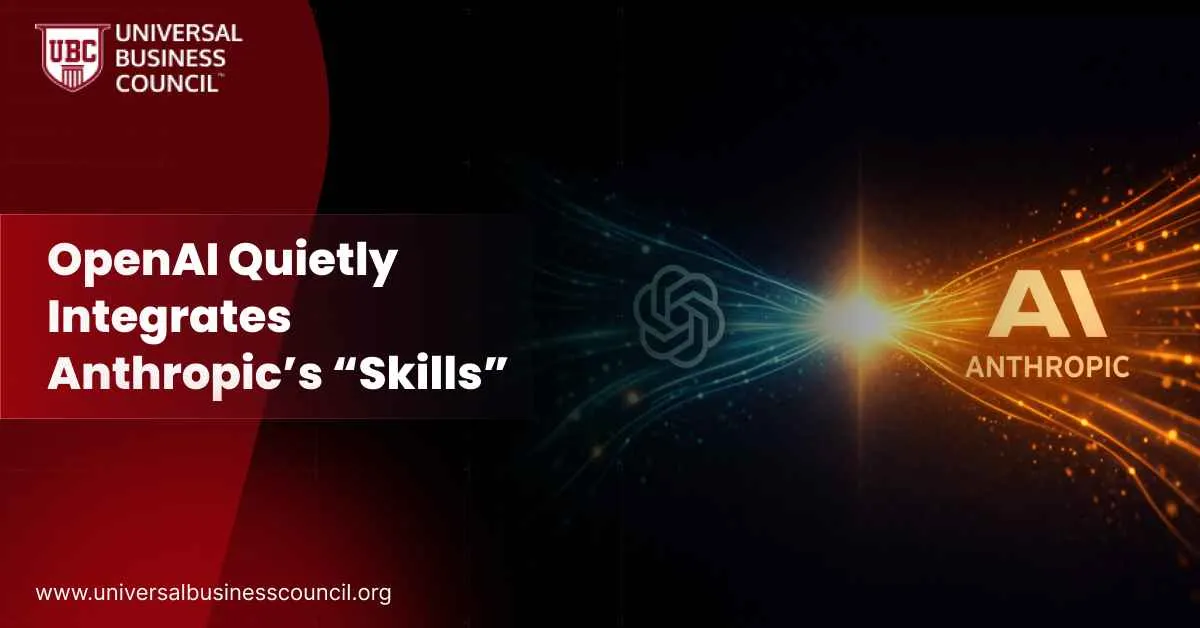 The success of digital marketing in 2025 depends on one key question — which channels actually deliver results? With budgets tightening and audience behavior shifting, marketers must invest where returns are measurable, privacy-compliant, and scalable. The digital landscape is changing quickly, shaped by artificial Intelligence, first-party data, and creative storytelling.
Businesses now need a mix of performance and brand-building channels to grow. Understanding which ones generate the best ROI is essential for both startups and global enterprises. For professionals who want to build a strong foundation in this evolving environment, learning AI Powered Digital Marketing helps develop the skills needed to run intelligent, data-driven campaigns.
The success of digital marketing in 2025 depends on one key question — which channels actually deliver results? With budgets tightening and audience behavior shifting, marketers must invest where returns are measurable, privacy-compliant, and scalable. The digital landscape is changing quickly, shaped by artificial Intelligence, first-party data, and creative storytelling.
Businesses now need a mix of performance and brand-building channels to grow. Understanding which ones generate the best ROI is essential for both startups and global enterprises. For professionals who want to build a strong foundation in this evolving environment, learning AI Powered Digital Marketing helps develop the skills needed to run intelligent, data-driven campaigns.
What Makes a Channel Effective Today
An effective marketing channel today is one that balances three elements — measurable performance, authentic engagement, and ethical data use. Efficiency now matters more than scale. With marketing budgets averaging just 7.7% of company revenue in 2025, teams must prove the value of every dollar spent.
Channels that can show clear links between investment and outcome lead the way. But effectiveness isn’t just about ROI. It’s also about adaptability, creativity, and the ability to maintain customer trust through transparency.
Marketers who want to understand the technologies powering these channels can explore the Deep Tech Certification
from Blockchain Council. It focuses on how emerging technologies like AI, automation, and blockchain ensure secure, transparent, and data-driven marketing operations.
Which Channels Deliver the Highest ROI
According to multiple 2025 marketing trend reports, a few digital channels consistently outperform the rest when it comes to ROI and engagement. Each has unique strengths that make it essential to a balanced strategy.
Email Marketing
Email continues to lead ROI rankings across industries. Studies show brands earn between $10 and $50 for every dollar invested. The reason is simple — email offers direct access to an owned audience without relying on platform algorithms.
Segmentation, personalization, and automation make email campaigns more efficient than ever. When integrated with CRM systems, email also helps track customer lifetime value, making it a high-impact, low-cost channel.
Marketers should focus on lifecycle messaging, creative testing, and value-based offers that encourage engagement rather than volume.
Search Engine Optimization (SEO) and Content Marketing
SEO and content marketing remain two of the most sustainable digital growth strategies. They deliver compounding results over time, unlike paid channels that stop performing once the budget ends.
Search engines are evolving into answer engines, where structured data and entity-based optimization play major roles. Creating content that informs, educates, and aligns with search intent is key.
Product-led content, blogs, podcasts, and educational videos not only improve visibility but also establish brand authority. Ethical marketers avoid keyword stuffing or manipulative link schemes, focusing instead on relevance and user experience.
Professionals looking to refine their technical and strategic marketing knowledge can pursue a Tech Certification
from Global Tech Council. It offers deep learning in analytics, automation, and AI integration for better SEO and content outcomes.
Paid Search
Paid search advertising is still one of the fastest ways to capture high-intent customers. With clear metrics and direct visibility into performance, it remains a must-have for any campaign mix.
In 2025, performance max (PMax) campaigns and AI-driven bidding strategies dominate Google Ads. However, marketers must use strict guardrails and continuous testing to ensure efficiency. Incrementality testing — measuring true added value beyond baseline traffic — helps refine strategy.
Paid search works best when it complements SEO. It can capture demand for new keywords and provide insight into evolving customer queries.
Social Media Marketing
Social media continues to evolve into a space where communities matter more than followers. Engagement rates between 1.4% and 2.8% are considered healthy benchmarks in 2025.
Short-form video remains the most engaging format, but authenticity and conversation drive success. Rather than chasing trends, brands are investing in creators, live content, and user-generated storytelling.
AI tools now help analyze engagement, identify loyal audiences, and recommend content that drives deeper connections. Platforms like Instagram, TikTok, and LinkedIn each serve different goals — from brand awareness to lead generation.
Consistency, transparency, and community management define long-term social media success.
Retail Media
Retail media networks have become one of the most effective performance channels. Ads that appear on e-commerce sites and marketplaces reach consumers close to the point of purchase.
Retailers like Amazon, Walmart, and Instacart continue to expand their advertising ecosystems, allowing brands to run shoppable ads and sponsored listings directly where buying decisions happen.
This channel is especially powerful for consumer goods and retail brands. Success depends on high-quality product feeds, optimized listings, and consistent review management.
Incrementality testing is essential — marketers need to confirm whether retail media drives true additional sales or simply captures conversions that would have happened anyway.
Digital Video and Connected TV (CTV)
Video remains one of the most effective storytelling tools. Connected TV advertising has grown rapidly, merging brand storytelling with measurable digital performance.
Marketers now use dynamic creative optimization (DCO) to personalize video content at scale. When paired with first-party data, video ads can target audiences across devices and measure impact more accurately than traditional television.
Video and CTV campaigns build awareness, drive engagement, and improve brand recall — all while contributing to measurable conversions.
Podcasts and Digital Audio
Podcasts and digital audio advertising are growing fast because they capture attention in ways visual channels can’t. Listeners spend more time per session, and host-read ads often sound more authentic than scripted spots.
Audio is particularly effective for storytelling, product launches, and thought leadership. Combined with promo codes and pixel-based tracking, it provides measurable mid-funnel performance.
As more platforms adopt AI transcription and targeting, digital audio will continue to deliver high engagement at reasonable costs.
How Should Budgets Be Split Across the Top Channels
With budgets under pressure, the smartest strategy is diversification. A balanced digital marketing mix ensures both short-term conversions and long-term brand growth.
Here’s a general breakdown based on 2025 trends:
- 30–35% for SEO, content, and organic visibility.
- 25–30% for paid search and performance ads.
- 15–20% for social media and influencer partnerships.
- 10–15% for email, automation, and CRM marketing.
- 10% for retail media, CTV, and podcasts combined.
Exact ratios depend on business goals, but marketers should prioritize channels that can prove ROI through measurable attribution and ethical data collection.
How to Measure Success Without Third-Party Cookies
As third-party cookies disappear, the industry is moving toward privacy-friendly tracking. Google’s Privacy Sandbox offers new APIs for targeting and measurement that protect user data while maintaining ad effectiveness.
Brands should invest in building strong first-party data systems, transparent consent interfaces, and data-clean-room partnerships. Measurement models like media mix modeling (MMM) and incremental lift studies will become standard practice.
Marketers who prioritize user trust by communicating how data is used will stand out. Privacy-first marketing is not a limitation — it’s a competitive advantage.
What Channel Mix Works Best for B2B vs B2C
The best digital marketing channels depend on audience type and purchase cycle.
For B2B Marketers
- LinkedIn dominates for lead generation, brand positioning, and thought leadership.
- Email and content marketing drive nurture campaigns that convert over time.
- SEO ensures long-term discoverability for niche topics and solutions.
- Webinars, whitepapers, and podcasts help establish credibility and authority.
For B2C Marketers
- Social media and short-form video drive awareness and emotional engagement.
- Retail media and paid search deliver fast conversions.
- Influencer collaborations enhance authenticity and reach younger audiences.
- Email marketing supports retention, loyalty, and personalized offers.
Both groups must focus on privacy, personalization, and performance measurement to stay competitive in a rapidly evolving market.
Which digital marketing channel has the best ROI?
Email marketing consistently delivers the highest ROI because it targets an owned audience and offers direct communication without intermediaries.
What is the most effective channel for brand awareness?
Video and social media are best for building awareness through visual storytelling and community engagement.
How do privacy changes affect channel performance?
They push marketers to rely on first-party data, transparent consent, and modeled measurement. Ethical practices improve user trust and long-term retention.
Are podcasts and retail media worth investing in?
Yes. Podcasts are excellent for mid-funnel storytelling, while retail media drives immediate conversions near checkout. Both channels are growing rapidly.
What’s the best channel mix for a small business?
Focus on cost-efficient, owned, and measurable channels like SEO, social media, and email. Gradually add paid search and retail media as budgets grow.
How can professionals stay updated on digital marketing trends?
Continuous learning is essential. Programs like the Deep Tech Certification
from Blockchain Council and the Marketing and Business Certification
from Universal Business Council provide structured knowledge to adapt to new technologies and ethical marketing practices.
Conclusion
The most effective digital marketing channels in 2025 are those that blend creativity, data, and trust. Email, SEO, paid search, and social media remain essential, but new growth is coming from retail media, connected TV, and digital audio. The key to success lies in balancing automation with authenticity, personalization with privacy, and efficiency with transparency.
The future of digital marketing belongs to those who can adapt quickly, measure honestly, and communicate ethically. The right mix of channels — guided by data and driven by creativity — will continue to define success for years to come.
 The success of digital marketing in 2025 depends on one key question — which channels actually deliver results? With budgets tightening and audience behavior shifting, marketers must invest where returns are measurable, privacy-compliant, and scalable. The digital landscape is changing quickly, shaped by artificial Intelligence, first-party data, and creative storytelling.
Businesses now need a mix of performance and brand-building channels to grow. Understanding which ones generate the best ROI is essential for both startups and global enterprises. For professionals who want to build a strong foundation in this evolving environment, learning AI Powered Digital Marketing helps develop the skills needed to run intelligent, data-driven campaigns.
The success of digital marketing in 2025 depends on one key question — which channels actually deliver results? With budgets tightening and audience behavior shifting, marketers must invest where returns are measurable, privacy-compliant, and scalable. The digital landscape is changing quickly, shaped by artificial Intelligence, first-party data, and creative storytelling.
Businesses now need a mix of performance and brand-building channels to grow. Understanding which ones generate the best ROI is essential for both startups and global enterprises. For professionals who want to build a strong foundation in this evolving environment, learning AI Powered Digital Marketing helps develop the skills needed to run intelligent, data-driven campaigns.





Leave a Reply